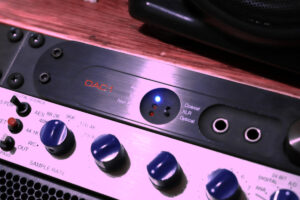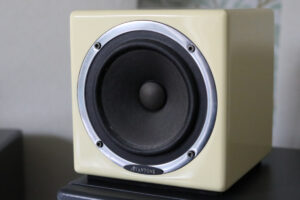The Crane Song HEDD is a mastering-grade, stereo converter unit, offering both analogue-to-digital (AD) and digital-to-analogue (DA) in the same box. Unusually, it also features three knobs for adding different flavours of digitally emulated ‘analogue’ saturation. The HEDD of the name stands for ‘Harmonically Enhanced Digital Device.’
Once described by high-end London pro audio shop KMR Audio as “probably the best converters in the world”, the Crane Song HEDD’s distinctive green knobs are still a common sight in top-end mastering racks, despite the unit having first appeared two decades ago.
What does the Crane Song HEDD sound like?
Converters of this calibre aren’t really supposed to sound like anything. And yet, they all do. I find the Crane Song to be simultaneously transparent in that everything I do to the signal is clearly represented, and full and meaty.
Remarkably for a digital unit as long in the tooth as the HEDD, there’s nothing ‘digital’ about it. And there must be some magic in the analogue circuitry that enables it to sound so good when clipped. While software clippers have come a long way, I still haven’t found anything with the solidity and bite – without ever being harsh – of clipping the HEDD.
And of course, the HEDD has those saturation knobs. In truth, plugin saturators have surpassed these by now. If I’m using saturation on a master these days (which is rare) it will usually be with Tone Projects Kelvin. But I got a good few years out of the HEDD saturation knobs, especially the tape, when I first got it. And it still only loses by a whisker these days.
Why is the Crane Song HEDD useful?
The HEDD probably appears in so many mastering racks because it is a top-end converter that handles both AD and DA in a 1U unit – and its quality punches far above its weight for its price.
When it was released, and for a long while after, mastering-grade converters tended to come in separate boxes for AD and DA. And they tended to cost an awful lot more. The HEDD quickly became a standard for sending out to analogue and back in again.
And I still find the clock to be excellent. My Prism Lyra interface sounds noticeably better when clocked to the HEDD, as have most other digital units I’ve tried it with.
History of the Crane Song HEDD
Crane Song is one commercial arm of American pro audio designer Dave Hill, who carved out a niche for himself as the ‘harmonics’ guy in the 2000s, when the whole sector was trying to figure out how to get digital recordings to sound as rich and full as analogue.
Alongside groundbreaking work with the HEDD, accompanied by classic Pro Tools plugins and Avid HEAT, Hill released a number of high-end analogue tools that all featured some kind of extra adjustable saturation. He now operates under his own name, following much the same philosophy as he did with Crane Song.
Explore more equipment

Benchmark DAC-1
The Benchmark DAC-1 is a mastering grade digital to analogue converter (DAC). Released in the mid-2000s, it remains a standard in top-flight mastering suites.

Avantone Mixcube
The Avantone Mixcube is the industry standard for a ‘grotbox’ speaker, designed to help mixing engineers ensure recordings translate on consumer devices.

API 2500
The API 2500 is one of the most desirable stereo bus compressors on the market. Its inimitable tone and extraordinary flexibility make it ideal for mastering.
